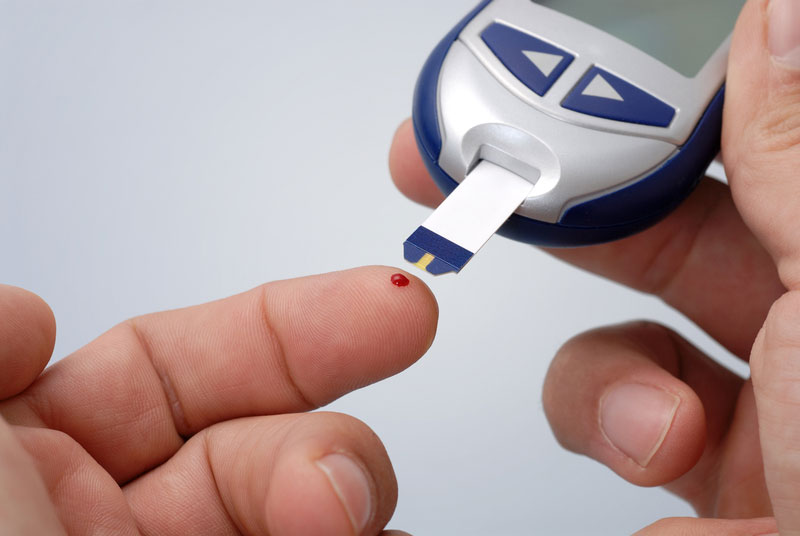In the United States, 55 percent of adults aged 18 to 39 are diagnosed with diabetes or have blood-sugar levels that put them at risk of developing the condition. Diabetes has taken over Americans’ lives, but also their wallets.
Diabetes is the first most expensive chronic condition regarding personal health care spending at $101.4 billion in 2013, surpassing other 155 illnesses like cancer and heart disease, suggests a report by the Institute for Health Metrics and Evaluation.


According to the American Diabetes Association (ADA), average medical costs are 2.3 times higher for those 30 million Americans coping with the illness despite advances in chronic care management, in particular for pharmaceuticals. Another 86 million Americans have prediabetes, estimated the Centers for Disease Control and Prevention.
The rise in prices of insulin medication manufactured by the two major pharmaceutical companies- Eli Lilly and Novo Nordisk- has reached 450 percent in the past 20 years, suggests a 2016 study from the Washington Post containing data from Truven Health Analytics.
One month’s worth of insulin supply can surpass the $255. The cost increase started a slow climb and then skyrocketed around 2013, said N. Chesney Hoagland0-Fuchs, chairwoman of the Diabetes Coalition of California, to the Sacramento Bee.
Insulin is not the only supply needed to take care of the condition. Depending on the treatment regimen, patients may also need to purchase other medications as syringes, pumps, needles, blood sugar sensors and monitors, even alcohol swabs for finger stick testing. It represents the spending of hundreds of dollars annually, which can add up to around $13,700 based on figures provided by the ADA.
Nicole Brito has a 7-years-old daughter suffering from Type 1 diabetes. Her daughter’s six shots per day, regular blood sugar tests, and glucose levels monitor translate to $1,600 yearly, not including diabetes-friendly snacks and drinks.
“If your insurance doesn’t cover enough, then it’s really hard on your bank account,” commented the Sacramento mom for the paper.
For Nicole, renewing prescriptions and insurance failing to cover their costs is a constant worry, although her family has received help from their health insurance plan, for example, with the $4,000 monitor.
Diabetes is the cash cow for drug companies
The exorbitant costs for diabetes drugs are part of the national debate revolving around pharmaceuticals and their price.
Keith Wick, 31, is another Type 1 diabetes patient that finds the medical costs daunting even with employer’s health insurance. Two years ago, Wick was paying around $60 for a 90-day insulin injections pack. Today, that same amount costs $210 – that’s a 250% difference.
“Diabetes is the cash cow of the pharmaceutical industry. You have to have [insulin]. You have to buy it or you risk losing your life,” complained Wick for the paper.
Wick and his wife are struggling to save for newer technology to treat his diabetes. His health plan would cover about 80% of the hardware cost of the continuous glucose-monitoring system but wouldn’t account for the disposable insulin cartridges or the sensor’s batteries.
One cause for the increment in prices may be the growing demand, as more and more people is diagnosed every year. Competition has not lowered the annual list price of the drugs, while generics find it hard to enter the market.
Another factor that influences how much patients pay for the medicine is how well their health plan provider negotiated those prices with the pharmaceutical companies. Jeffrey Hoch, associate director of the UC David Center for HealthCare Policy and Research, explained that these negotiations happen behind closed doors and set prices are not disclosed to the public, making it hard to compare what different insurances like Medicaid or Medicare are paying for, reported the Sacramento Bee.
Other insurance providers do cover the full cost of the medications, but price spikes have led them to restrict doctors on which medicines they can prescribe.
Dr. Gilbert Simon, medical director of Sacramento Family Medical Clinics which treat thousands of Medi-Cal patients, told The Sacramento Bee that doctors are required to start diabetes treatment with cheaper, non-insulin solutions that are often not as effective at reducing high blood sugar levels, dilating the process of getting to the most effective medications.
Executive Director of Public Health Advocates, Harold Goldstein, describes the vicious cycle of the costly disease. Higher medicine costs mean that lower-income people get left behind in the race to care for their condition, and as a result, they get admitted into hospitals with rare complications that add to the overall expenditures.
“If we want to get health care costs under control, the single most (important) thing we have to do is get diabetes costs under control and prevent diabetes from happening in the first place,” Goldstein clarified.
Diabetes and Eating Disorders
Signs to spot the presence of diabulimia, which affects both men and women, include “regular changes in weight, awkwardness over questions about diabetes control, avoiding clinic appointments, having a high hemoglobin A1c (HbA1c) compared with results entered in a blood glucose diary, being very thirsty, needing to urinate frequently and having blurred vision”, reported the journal.
Diabulimia disorder is widely overlooked, and there should be more awareness and research into what is the best way to address the negative emotional impact that the stress of injecting insulin can cause, The Siasat Daily pointed out.
